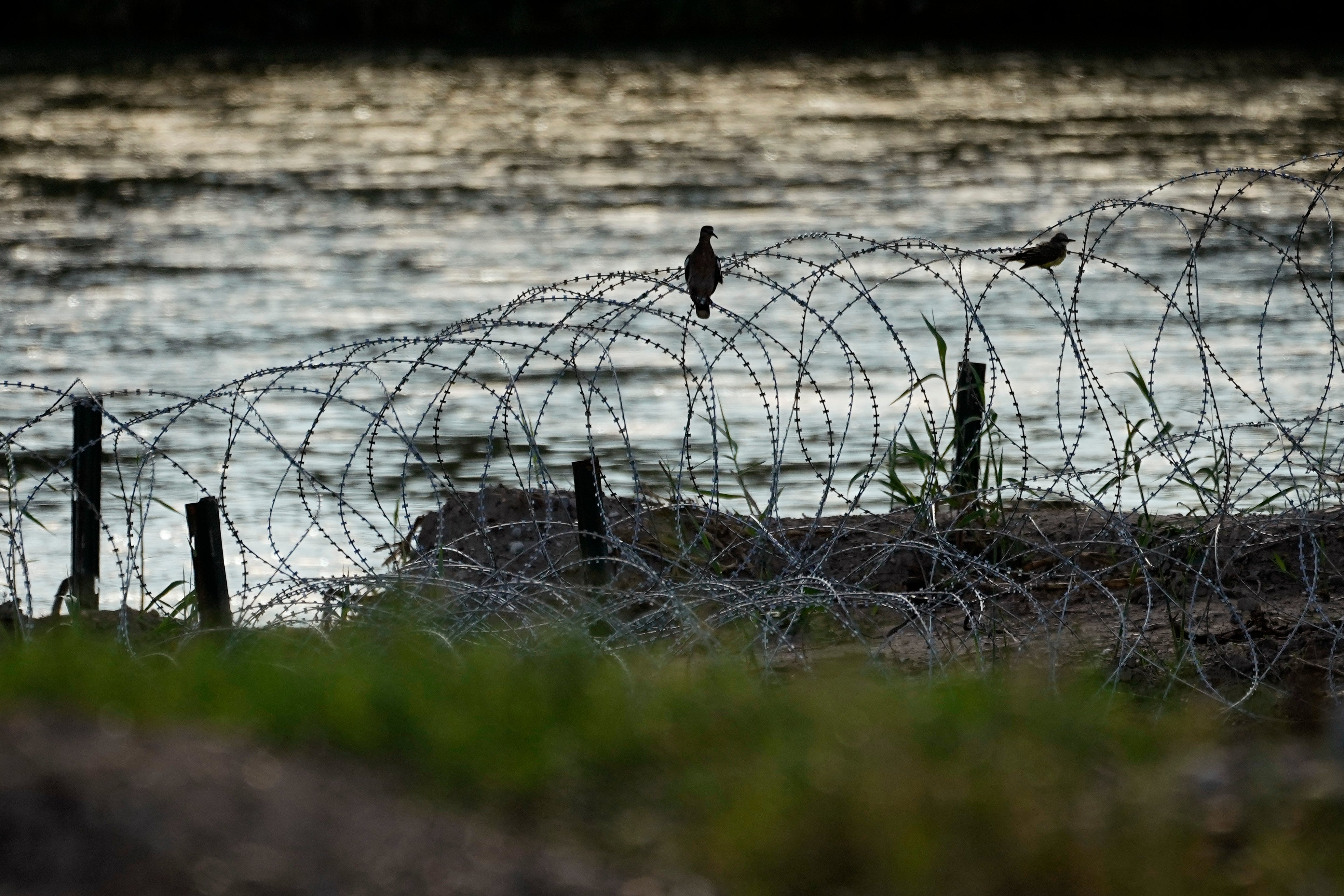Biden and Texas’s legal war over the border, explained
Federal officials, Republican governor, and local residents have battled over how to handle record-setting number of crossings


The attention of Washington has been divided between a series of crises in recent weeks, from the chaotic intraparty fiasco of selecting a new Republican as Speaker of the House, to the paradigm-shattering war between Israel and Hamas.
All the while, a series of slightly more quiet, but no less consequential, disputes have been simmering between the Biden administration and Texas leaders over the fate of the state’s international border with Mexico, including a set of lawsuits that will determine the shape of immigration to come.
As The Independent, has reported, to many on the ground, the US-Mexico border, particularly at busy crossings like Eagle Pass, Texas, has come to look like a “war zone,” complete with razor wire, sharp floating barriers, and state troopers deployed on military-style missions through Texas’s controversial Operation Lone Star.
Governor Greg Abbott of Texas, to put a fine point on things, has declared the state to literally be under “invasion,” invoking a much-disputed legal theory that it gives him additional emergency powers.
Immigration is the province of federal law, not state action, and the governor’s boundary-pushing border policies have provoked a strong response from the Biden administration.
Border Patrol agents have snipped Texas’s razor wire defences. The Justice Department sued the state in July over its installation of razor-edged floating border barriers in the Rio Grande, which have already been blamed for putting migrants, many of whom are seeking the legally protected right of asylum, in lethal danger.
But in recent weeks, a series of court decisions have prevented the federal government from altering too much of the Texas border agenda.
On Monday, a federal judge issued a temporary restraining order halting the Border Patrol from removing Texas razor wire unless it’s necessary to “provide emergency medical aid” to migrants.
Otherwise, the barriers, which have been blamed for severely injuring border crossers, will remain while a legal battle plays out. Texas sued the Biden administration last week to stop the Border Patrol from taking down the barriers.
Last month, the state won another victory in its border war against the White House, this time in the DoJ’s lawsuit against Texas for its floating border wall.

The federal government contends that the state overstepped authority and broke environmental law by putting the 1,000-foot wall in the Rio Grande international waterway, and a lower court ordered the state to move the wall to the US side of the banks while the suit played out.
However, the 5th Circuit US Court of Appeals overruled the lower decision, allowing Mr Abbott’s wall to remain in place.
The federal government and Texas aren’t the only ones fighting over what the border looks like.
Local residents have also sued Texas over the floating barrier, which activists say is putting migrants at lethal risk.
“It’s very likely that with [the floating buoy wall] they are looking for more remote and isolated places to come across so that whenever they are in danger by heat exhaustion, by drowning, they will not have anybody to help them,” Fernando García of the Border Network for Human Rights told The Independent earlier this year.
“All of this is death by policy.”
In August, meanwhile, immigration rights advocates filed a lawsuit against Texas officials, accusing them of using an expanded mandate under Operation Lone Star to operate a dragnet that held migrants on state charges and didn’t release them for weeks after the cases were dismissed.
The Biden administration has also come under criticism for the border actions it has attempted to take.
A White House plan to hold migrant families in Texas hotel rooms while officials considered them for asylum collapsed under local opposition this month.
The administration has also been criticised for waiving 26 federal laws for additional construction on Donald Trump’s signature border wall, though the White House contends it was bound to further the project under funding appropriated in 2019 before Mr Biden took office.
The disputes all stem from a larger factor on the ground: unprecedented immigration across the US-Mexico border.
As of this month, for the third year in a row, the US-Mexico border saw record-setting numbers of border apprehensions, topping more 2.4 million in the 2023 fiscal year, which ended in September. That’s almost 750,000 more than in 2021.
However, with Washington unable to find a major immigration reform in decades, and states taking matters into their own hands, the US-Mexico border looks set in the immediate future for more chaos, rather than less.
Join our commenting forum
Join thought-provoking conversations, follow other Independent readers and see their replies
Comments
Bookmark popover
Removed from bookmarks